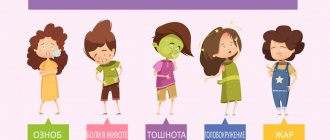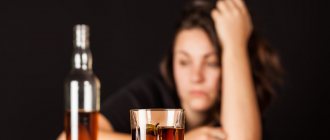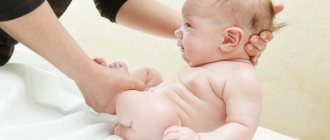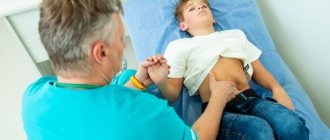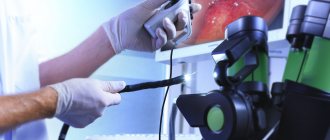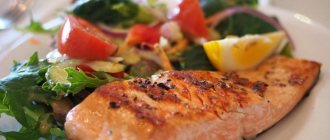Children suffer from food poisoning more often than adults. To protect a child from poisoning, it is necessary to follow the rules for preparing, storing and eating food, and also know how to act in an emergency.
Food poisoning is an acute condition caused by consuming food or water contaminated with bacteria and toxins or other substances. Children under 5 years of age are more at risk of food poisoning. This is due both to an incompletely formed immune system, which is not able to effectively suppress pathogens, and to the reduced acidity of gastric juice in children, which increases the likelihood of dangerous substances entering the intestines and bloodstream.
Food poisoning is more dangerous for children than for adults. It often causes vomiting and diarrhea at the same time, leading to rapid dehydration. Due to the small supply of fluid in the child's body, it is important to constantly monitor the amount of water consumed by the child. If the poisoning is caused by E. coli, the risk of developing a dangerous complication increases: hemolytic-uremic syndrome, which is one of the common causes of acute renal failure in children. Therefore, at the first suspicion of poisoning in a baby, it is necessary to seek qualified medical help as soon as possible.
Symptoms of food poisoning
Signs of poisoning depend on what pathogen has entered the child’s body. Typically, the disease develops as follows: the pathogen enters the gastrointestinal tract along with poor-quality food, bacteria begin to actively develop, releasing waste products into the intestines. As a result, acute intoxication develops and the first symptoms appear:
- painful abdominal cramps, which may be accompanied by bloating and increased gas production;
- frequent loose stools. Foreign inclusions may be observed in the stool - a large amount of mucus, blood, stool may be greenish, foamy;
- nausea and vomiting.
At the same time, the temperature rises to 38-38.5℃. Children become lethargic, capricious, and refuse to eat. Newborns may cry loudly non-stop and pull their legs towards their tummy. Often food poisoning in children is accompanied by symptoms from the nervous system: headache.
Other signs and speed of development of the disease depend on what pathogen has entered the child’s body:
- Staphylococcus aureus. The bacterium develops in cooked food if storage conditions are not met. May be found in prepared meats, baked goods, and sandwiches. Poisoning manifests itself within 30-60 minutes after eating low-quality food, cramping abdominal pain, diarrhea and vomiting appear;
- clostridia. The pathogen is most often found in beef and pork, especially in large hams, when it is not possible to completely cook the core. The infection is characterized by a sudden onset: diarrhea and minor abdominal pain appear, without nausea or fever;
- norovirus. It lives on green leaves, fresh fruits, and can be found in raw shellfish. The first signs appear after a day. The child begins to complain of loose, painful stools, frequent urge to defecate, and severe nausea;
- salmonella. Found in unprocessed milk, eggs, and chicken. Infection causes high fever up to 38.5℃, diarrhea, vomiting, accompanied by severe cramping abdominal cramps;
- coli. It lives in unpasteurized milk and juice, and is found in beef meat. The main difference between poisoning is the appearance of blood impurities in the stool. There is a high probability of developing renal failure;
- botulinum toxin. It is found in improperly prepared pickles and marinades. If botulism develops, the functioning of not only the gastrointestinal tract, but also the nervous system is disrupted: the patient complains of blurred vision, it is difficult for him to control his limbs and turn his head.
Any malaise and a child’s complaints of pain in the abdomen are an alarming symptom. It is recommended to call an ambulance immediately.
Sources
- Wang Z., Bao J., Wang T., Moryani HT., Kang W., Zheng J., Zhan C., Xiao W. Hazardous Heavy Metals Accumulation and Health Risk Assessment of Different Vegetable Species in Contaminated Soils from a Typical Mining City, Central China. // Int J Environ Res Public Health - 2022 - Vol18 - N5 - p.; PMID:33807858
- Gold JAW., Kiernan E., Yeh M., Jackson BR., Benedict K. Health Care Utilization and Outcomes Associated with Accidental Poisonous Mushroom Ingestions - United States, 2016-2018. // MMWR Morb Mortal Wkly Rep - 2022 - Vol70 - N10 - p.337-341; PMID:33705365
- Martínez-Puchol S., Riveros M., Ruidias K., Granda A., Ruiz-Roldán L., Zapata-Cachay C., Ochoa TJ., Pons MJ., Ruiz J. Dissemination of a multidrug resistant CTX-M- 65 producer Salmonella enterica serovar Infantis clone between marketed chicken meat and children. // Int J Food Microbiol - 2022 - Vol344 - NNULL - p.109109; PMID:33677191
- Driller G., Plasencia E., Apollonio DE. Retrospective review of nicotine exposures in California from 2012 to 2022 and analysis of the impacts of e-cigarette regulations. // BMJ Open - 2022 - Vol11 - N3 - p.e043133; PMID:33653751
- Natasha M., Shahid S., Khalid NK., Niazi B., Murtaza N., Ahmad A., Farooq A., Zakir M., Imran G., Abbas. Health risks of arsenic buildup in soil and food crops after wastewater irrigation. // Sci Total Environ - 2022 - Vol772 - NNULL - p.145266; PMID:33578156
- So SCA., Tsoi MF., Cheung AJ., Cheung TT., Cheung BMY. Blood and Urine Inorganic and Organic Mercury Levels in the United States from 1999 to 2016. // Am J Med - 2022 - Vol134 - N1 - p.e20-e30; PMID:32692984
- Varga C., John P., Cooke M., Majowicz SE. Spatial and space-time clustering and demographic characteristics of human nontyphoidal Salmonella infections with major serotypes in Toronto, Canada. // PLoS One - 2022 - Vol15 - N7 - p.e0235291; PMID:32609730
- Whitely M., Raven M., Jureidini J. Antidepressant Prescribing and Suicide/Self-Harm by Young Australians: Regulatory Warnings, Contradictory Advice, and Long-Term Trends. // Front Psychiatry - 2020 - Vol11 - NNULL - p.478; PMID:32587531
- Benabdellah FZ., Soulaymani A., Mokhtari A., Soulaymani-Bencheikh R., Khadmaoui A., Hami H. Economic evaluation of the direct cost resulting from childhood poisoning in Morocco: micro-costing analysis. // Arch Public Health - 2022 - Vol78 - NNULL - p.59; PMID:32582445
- Thomas VG., Pain DJ., Kanstrup N., Green RE. Setting maximum levels for lead in game meat in EC regulations: An adjunct to replacement of lead ammunition. // Ambio - 2022 - Vol49 - N12 - p.2026-2037; PMID:32451970
First aid for poisoning
The first thing to do if you suspect a child has food poisoning is to call an ambulance or a doctor at home. While you wait for the doctor to arrive, give your child more fluids to prevent dehydration. Children under one year old can be given a teaspoon of water every 5-7 minutes.
You should not self-medicate or give your child any medications without consulting a doctor. If the baby’s condition is serious, then when calling an ambulance, ask what you should do and strictly follow the instructions received.
If the child is shivering, cover him with a warm blanket and ensure complete rest. In case of food poisoning, gastric lavage may be required. But if you are not sure that this is what causes the disease, do not take any action on your own. Remember that vomiting, fever and severe abdominal pain do not always indicate poisoning. Similar symptoms are accompanied by other diseases, such as appendicitis.
When to seek medical help?
The younger the child, the more dangerous food poisoning can be for him. Therefore, you should immediately contact an ambulance if your baby experiences:
- loss of interest in food;
- vomit;
- incessant crying;
- diarrhea;
- temperature.
The baby may begin to cry loudly non-stop or pull his legs towards his stomach due to spasms in the gastrointestinal tract. Before the ambulance arrives, make sure that the baby is receiving enough fluids.
In older children, symptoms of poisoning may be less obvious. You should consult a doctor as soon as possible if:
- diarrhea does not stop for more than 3 days;
- more than 4 episodes of vomiting occurred per day;
- there is blood in the stool;
- temperature rises above 38℃;
- the child experiences severe abdominal pain.
Other dangerous symptoms include: confusion, lethargy, headache, rapid heartbeat, weakened pulse. Pay attention to how often the child urinates - the absence of urine for 5-6 hours may indicate dehydration.
What products are considered potentially dangerous?
Potentially dangerous bacteria can be found on almost all products. But for children to experience symptoms of poisoning, a sufficiently large number of microorganisms must enter the body. Therefore, caution should first of all be exercised in relation to products that can become a breeding ground for the proliferation of harmful bacteria. These include:
- Dairy products with a short shelf life and especially those with already opened packaging. The most dangerous are ice cream and cottage cheese.
- Eggs.
- Fish and products made from it, seafood.
- Confectionery cream products.
Of course, children should not be deprived of such products. After all, many of them are a source of beneficial nutrients necessary for growth and development. But it is necessary to pay attention to the quality and freshness of the products that are used as food for the child. Poisoning is often a consequence of repeated defrosting, prolonged exposure to room temperature, or insufficient heat treatment. It is advisable to accustom children from childhood to healthy, high-quality home-cooked food and familiarize them with the rules for storing food.
Diet for child poisoning
Treatment for food poisoning is selected by a gastroenterologist. Enterosorbents may be prescribed to remove toxins from the gastrointestinal tract, antimicrobial or antiviral agents. When treating the disease, much attention is paid to diet.
For newborns, the following feeding schedule should be followed:
- when breastfeeding: until the condition normalizes, you must stop feeding the baby milk, you must give a large amount of boiled warm water. As soon as the vomiting and diarrhea stop, you can return to your usual feeding pattern (unless your doctor says otherwise);
- with artificial feeding: in agreement with the doctor, stop feeding for 8-12 hours, give a large amount of warm water. Then you can gradually return fermented milk mixtures and rice water to your diet. Give other products (for example, vegetable and fruit purees, ground meat) a few days after stool normalization. As a rule, detailed recommendations are made by the attending pediatrician.
For older children, the diet is different. Usually, until the nausea and vomiting stops, the child himself refuses to eat. This is normal, but you need to make sure he drinks enough. If a child's lips are dry, this indicates dehydration.
As soon as the child's appetite returns, he can be given:
- rice porridge with water;
- mashed potatoes in water without oil;
- crackers;
- vegetarian puree soups.
Food must be consumed in small portions at short intervals. This way you reduce the burden on the gastrointestinal tract and protect the child from the recurrence of nausea or diarrhea.
You can return to your usual diet as directed by your doctor. But even after recovery for 2-4 weeks, it is better to stick to a diet: avoid salty and smoked foods, baked goods, and carbonated drinks.
Classification
“I ate something” is the most common formulation of the cause of the disease
There are two large groups of food intoxications:
- Infectious, which are provoked by various microbes (staphylococcus, rotavirus, enteroviruses, clostridia).
- Non-infectious, which includes poisoning by poisons contained in plants, mushrooms, berries, as well as in vegetables, fruits and other garden produce covered with chemicals. This also includes poisons of animal origin.
As for the clinical course of food poisoning, there are three main stages:
- Latent, which begins from the moment a toxin or poison enters the body and ends with the appearance of the first symptoms. It itself occurs without any symptoms, and its duration depends on the type of toxic substance, its quantity, the state of health and age of the particular child, as well as on various individual characteristics of the body.
- Toxigenic. This stage begins with the first signs of intoxication and continues until the moment when the body defeats the microbes or poisons that caused the poisoning. It is the toxicogenic period that is the most unpleasant and dangerous, since all the consequences of toxins appear in the form of fever, nausea, diarrhea, headache and other symptoms.
- Restorative. It begins after all the “invaders” are defeated and lasts until complete recovery. During this period, digestion is normalized, and the excretory and immune systems “come to their senses.”
ATTENTION! The recovery stage in a recently poisoned child can manifest itself in the form of a categorical refusal to eat, which greatly frightens already worried relatives. However, this is a completely adequate reaction of the body to the illness, and unnecessary stress on the gastrointestinal tract can provoke additional troubles. Therefore, diet after food poisoning for children is as important as drinking plenty of fluids during the acute period.
Prevention of food poisoning
To prevent food poisoning, give your child only clean and properly processed food. There are four steps to ensuring your food is free of pathogens:
- thorough cleaning. Before preparing food, you must wash your hands, kitchen utensils, fresh vegetables and fruits under running water using special products;
- protection against cross contamination. Raw foods should not be allowed to come into contact with cooked foods: eggs, raw meat, poultry and fish should be stored in separate containers and cut on separate cutting boards. This will prevent bacteria from getting from raw food into prepared dishes;
- heat treatment. Most bacteria and viruses are killed when heated above 100℃;
- quick freezing. If you store frozen food, make sure the freezer compartment is kept at a low enough temperature and remember to wipe it down periodically.
By using these rules, you guarantee that your child will not be poisoned by homemade food. But this is not enough: he can catch an intestinal infection outside the home. Therefore, it is necessary to teach children to observe the rules of personal hygiene from an early age. Explain to your child that it is necessary to wash your hands before eating; you cannot eat vegetables and fruits without washing them.
Also, resistance to food poisoning is higher if the child has a strong immune system. To strengthen children's immunity it is recommended:
- lead an active lifestyle - do gymnastics with your child, enroll him in a sports section;
- take regular walks – if it’s cold outside, make sure to wear clothes that are appropriate for the season;
- develop a daily routine - it is especially useful for preschool children. Adequate sleep and eating at the same time allow the child’s body to better cope with stress and resist infectious agents;
- balance your diet. Dysbacteriosis further weakens the immune system and increases the risk of food poisoning.
In the warm season, you should not prepare food for future use - pathogenic microflora quickly develops in it. Under 5 years of age, you should not include dishes with mushrooms, pickled and salty foods in your child’s diet. There is a high probability that the baby’s body will not cope with them and poisoning will develop. If you buy finished products (for example, baked goods), make sure that the manufacturer has all the necessary sanitary permits. It is better not to give street food to children. Detailed recommendations on feeding children can be obtained during a consultation with a pediatrician or pediatric gastroenterologist.
0
1
4
Article rating:
4.3 out of 5 based on 10 ratings
Author: Mikusko-Petrova Olga Zosimovna
Pediatric gastroenterologist. Highest category. Work experience 13 years.
Poisoning in children
All over the world, the number of acute poisonings is steadily increasing, this situation is called a “creeping disaster.” Due to the wide distribution of various chemical and pharmacological drugs in the environment, more and more children are admitted to toxicology departments with a diagnosis of acute exogenous poisoning.
Another, even more serious, reason is the mother’s frivolous attitude towards the health of her own child, her inattention and reliance on the Russian “maybe”.
The one-year-old baby woke up early and climbed out of the crib. Mom dressed him and let him “free-graze”, and she went to bed to get some sleep.
You say: this can’t happen? Unfortunately, it can, like all other cases from personal medical practice.
The kid, left unattended, happily ran the kitchen, scattered cereal, spilled oil, and then climbed onto a chair and took out his grandmother’s clonidine from the shelf. An hour later, when the mother woke up, the baby was already asleep, clutching a bottle of pills in his fist.
A friend came to visit her mother, whom she had not seen for a long time. There is so much news that requires immediate discussion over a cup of coffee and a cigarette. But passive smoking is harmful to children. Therefore, they left him in the room, and they retired to the kitchen. It is unknown how long the smoke break lasted. Mom claims that it won’t be long. But the baby had enough time to take birth control pills out of the guest’s bag and feast on them.
A two-year-old girl was playing on the floor with toys and suddenly fell asleep on the floor. Mom carried her to the crib and went about her household chores, happy that the child was not in the way. After some time, the mother noticed that the girl’s sleep was restless, she was crying without waking up, making random movements with her limbs, as if fighting off someone.
The emergency doctor suspected drug poisoning, and a bottle of amitriptyline (used for depression) was found on the floor among the toys. The child's restless behavior was explained by the occurrence of hallucinations.
Mom poured “Antinakipin” into the kettle and left it overnight so that all the sediment dissolved. When early in the morning the baby demanded a legitimate bottle, the half-asleep mother diluted the milk formula with water from the ill-fated kettle and gave it to the child. She came to her senses only after noticing that the mixture in the bottle had curled up into flakes. And during this time the baby had already taken a sip of a hefty dose.
Thousands of similar examples can be given.
But there are other cases when the mother exceeds the dose of the medicine with her own hands or mistakenly gives the child another medicine.
Every family has a first aid kit with a set of the most necessary and seemingly harmless medicines. But are they so harmless?
Back in the XYI century, the physician and naturalist Paracelsus said: “Only the dose distinguishes poison from medicine.”
Do you know that Calpol, Panadol, Tylenol and other paracetamol-based drugs, widely advertised and loved by parents, have a toxic effect on the liver even in a dose only twice as high as a single dose, and a tenfold excess of a single dose causes kidney failure? Isn't the penalty for uncontrolled consumption of “strawberry-flavored syrup” too heavy?
The familiar drugs diphenhydramine, suprastin, pipolfen, in addition to allergic ones, have a calming and hypnotic effect, which makes them very popular with some parents.
Wanting the child to sleep longer on a weekend or holiday, the mother gives the baby diphenhydramine in an increased dose.
Contrary to the expected result, the child does not fall asleep and receives another tablet. After this, the child not only does not calm down, but, on the contrary, becomes agitated, does not find a place for himself in the crib, fights off someone invisible with his hands, squirms, and cries. His skin turned red and dry, his pupils dilated, his heart beat faster. And the culprit was an overdose of diphenhydramine.
The baby has a runny nose. He cannot breastfeed and sleeps poorly. The doctor prescribed vasoconstrictor nasal drops for the baby: naphthyzin, galazolin or sanorin. After the first procedure, the baby breathed freely through his nose, ate well and fell asleep peacefully. The satisfied mother began to instill drops in him before each feeding, and then again before putting him to bed. By evening, the child seemed to have been replaced: he became lethargic, drowsy, refused to eat and asked to go to bed. The skin became pale, cold, and sweating increased. Having measured the temperature, the mother was horrified: 34.7 C. So intensive treatment of a runny nose led to poisoning of the baby.
Increasingly, vasoconstrictor drops are produced in plastic bottles equipped with a dropper spout. This is done for the convenience of consumers: remove the cap, press on the pliable walls, drop the medicine into the nose, and no fuss with the pipette. This method is not suitable for small children, since by applying force, you can inject the medicine in a stream, significantly exceeding the dose. Use a regular pipette, putting in as many drops as the doctor prescribed.
The child vomits repeatedly, and the mother, instead of inviting a doctor, gives him cerucal for two days in a row (“I know that it stops the vomiting”). And she has no idea about the side effects of this drug, as well as the undesirability of its use in children under 14 years of age. Therefore, when on the 3rd day the child began to experience violent movements in the limbs and neck muscles (hyperextension of the arms, involuntary turns of the head to the side) and convulsive twitching (grimaces) of the facial muscles, the mother was very surprised and called an ambulance. Having barely looked at the boy, the emergency doctor asked: “Did you give Cerucal?”, and, having received an affirmative answer, began to lavage the stomach through a tube.
Unfortunately, poisoning in children is not limited to drugs. In everyday life, we are surrounded by chemicals designed to improve and make our lives easier. How many troubles and misfortunes the vinegar essence, used in every family for home canning, has brought and will continue to bring to children! No country in the world produces acetic acid of such concentration for household purposes, but here, please drink, I don’t want it.
Neither a pedantic German woman, nor a frivolous French woman, nor a disciplined American woman would think of pouring a toxic substance into a Pepsi or Fanta bottle, and in our country, the cause of poisoning of children is often the neglect of the basic rules for storing detergents and disinfectants and household chemicals.
“How did this happen? - Mom laments, “after all, I wrote on the bottle that there is gasoline.”
But the baby doesn’t know how to read, but he remembers well that yesterday, during a walk, dad poured him some delicious water from such a bottle.
In children under one year of age, motor activity and field of activity are limited to a crib or playpen. They cannot obtain and swallow medications or toxic substances on their own. Therefore, the cause of poisoning in children in the first year of life is the inattention and carelessness of parents, when, having mixed up the dishes, they give the child alcoholic drinks or other toxic substances instead of water; instead of nasal drops, eye drops with clonidine are instilled; following doctor's prescriptions, they exceed the dose of medications, and often treat the child on their own, without consulting a doctor, relying on their own knowledge or the advice of friends.
The baby’s ability to move independently increases the risk of accidents, including poisoning. There are fewer and fewer inaccessible places for a child, and more and more attractive-looking objects and substances. Is it possible to pass by a bottle with such beautiful multi-colored tablets? You need to get them out and try them immediately. Oh, and they are also in a sweet shell, real candies!
Always remember that a child “learns the world through his mouth.” This circumstance explains the largest number of poisonings in the group of children 2 and 3 years of age.
Add here the mother’s carelessness in everyday life, the carelessness of adults when storing medicines and chemicals, and the picture will be complete.
The fate of a child with acute poisoning often depends on the correct behavior of the mother or others. What should a mother do if her child has taken a drug or chemical?
If the fact of ingestion of a toxic substance is established, immediately call an ambulance, and before the brigade arrives, free the child’s mouth from tablets that he did not have time to swallow, try to rinse his mouth and give him a large amount of water (up to 200 ml) with two crushed tablets of activated carbon or other adsorbent, for example, polyphepan (1-2 teaspoons).
Do not give milk to your child, as some poisons are fat-soluble, and the fat contained in milk will speed up the absorption of the poison.
Try to collect and count the remaining tablets, estimate how many tablets the baby managed to swallow. It is clear to everyone that the larger the dose, the more severe the poisoning, the more serious the prognosis.
But you shouldn’t calm down if you’re missing “just one” tablet. Some medications have such a strong and rapid effect that even one tablet can lead to severe impairment of vital functions. Such drugs include nitroglycerin, chlorpromazine, digoxin, gemiton, clonidine, amitriptyline.
Never induce vomiting in a child if poisoning occurs with concentrated acid or caustic alkali, which causes burns to the mouth, pharynx and esophagus. A caustic substance, when passing in the opposite direction, will inevitably increase the area and depth of the burn, and may also enter the respiratory tract. Try to give your child water (1.5 - 2 glasses) to reduce the concentration of the caustic substance in the stomach.
The popular opinion that in case of acid poisoning one should drink alkaline drinks, and in case of alkali poisoning - weakly acidic solutions, is incorrect, since the carbon dioxide formed as a result of such a reaction causes overdistension of the stomach and deterioration of the child’s condition.
If poisoning occurs due to gas or fumes of a toxic substance, the child should be urgently removed from the gas-polluted room, freed from restrictive clothing, and cleared of mucus and vomit from the airways.
If a toxic substance gets into the eyes, it is necessary to rinse the eyes with a stream of warm water using a syringe (without a needle) or a rubber bulb for 5 minutes.
If a toxic substance gets on the skin, the child should be undressed and the skin should be thoroughly washed with warm running water and soap, first treating the contaminated areas and then the entire surface of the body.
Sometimes the fact that a child is taking medications or chemicals remains unknown to the mother or other adult family members, which significantly complicates diagnosis, leads to untimely provision of assistance, and worsens the prognosis.
An alarming moment that makes a mother think about poisoning is a change in the child’s behavior: usually active and cheerful, he suddenly becomes lethargic, drowsy, and falls asleep at inopportune times. The sleep is so deep and sound that it is impossible to wake him up. Or, conversely, in a dream, a child makes active movements, crawls on the bed, fights off someone with his arms and legs, cries, screams, without waking up. This behavior indicates hallucinations. Convulsions and loss of consciousness may occur.
Consider poisoning if...
- your baby has a runny nose, and you, sparing no medication, instill vasoconstrictor drops into his nose, and the child becomes lethargic, refuses to eat and asks to sleep;
- the child suddenly becomes silly, funny for no reason, he is “stormy”, i.e. staggers to the sides when walking, he bumps into objects, stumbles out of the blue;
- in the midst of complete health, the child’s condition suddenly worsens, consciousness is impaired, convulsions appear, and there are no signs of an acute inflammatory disease.
Call an ambulance and tell your doctor about your observations and suspicions. The sooner you do this, the better for the child.
Is there really nothing that can be done to protect children from exposure to toxic substances? It is possible and even necessary!
Prevention of poisoning is extremely simple and does not require any moral or material costs from parents.
Medicines should be stored out of the reach of children. Periodically audit your home medicine cabinet and get rid of unnecessary, expired, or worn-out medications. Do not keep medications “on hand” in your cosmetic bag, pocket, or purse. Your young explorer will find them everywhere and try them out.
If you give your child pills or vitamins during illness, never call them “candy.”
Store cleaning agents and detergents, insect repellent aerosols, stain removers and solvents, and technical fluids indoors or in a locked cabinet.
Pouring potentially toxic substances into food containers is not permitted.
Nail polish remover, deodorants, and cosmetic lotions should be stored on a high shelf where a child cannot reach even from a chair.
Do not leave unfinished alcoholic drinks in glasses. While you are seeing off the guests, the children can continue the festive feast, following your example.
Do not keep poisonous plants in the house, and on a walk do not allow your child to try the “beautiful berries” from trees and bushes.
All of the above applies to a greater extent to children, whose poisoning is mainly accidental.
